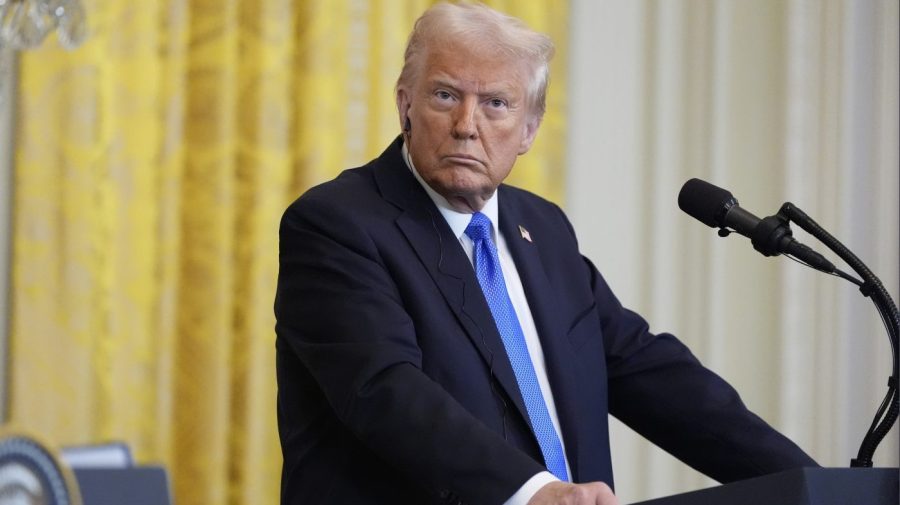
When the USS Wisconsin, a battleship, passed through the Panama Canal in 1957 on its last cruise to South America, with several hundred of us Navy ROTC midshipmen aboard, the only issue was the scraping of the protective fenders as the ship squeezed its wide berth through the channel, with barely a foot to spare on each side. Danger from hostile action was inconceivable, as the entire canal was under U.S. control.
Today, the Navy no longer operates battleships, but its cruisers, destroyers, amphibious ships and submarines use the canal to move elements of its fleet between the Atlantic and Pacific Oceans, rather than taking the much longer route around South America. For U.S. national security, it is an absolutely vital waterway, especially in times of conflict.
In the 1960s and 1970s, a series of violent street protests against the U.S. presence in Panama by “opposition groups including the Communists” put pressure on both governments. In 1977, President Jimmy Carter negotiated transfer of the canal to the newly created Panamanian state. The conditions of the treaty provided that the U.S., traditionally the largest user, would continue to “manage, operate, and maintain the Panama Canal” until the end of 1999, when it came under Panamanian ownership and control.
Almost immediately, China began financing infrastructure improvements to the canal, and a Chinese-controlled company — Hutchison Whampoa of Hong Kong — succeeded in winning contracts to operate ports at both entry points.
Panama was once one of 30 countries that maintained diplomatic relations with Taiwan despite Chinese political pressure and economic incentives to terminate them and switch recognition to China. One by one over the years, most countries yielded to China’s threats and bribes. Panama succumbed in 2017.
The threat to U.S. national security is obvious: in an international crisis or conflict involving the U.S. or its allies, China could close the canal and prevent the U.S. Navy from moving military assets between the Atlantic and Pacific Oceans. Even in a time of relative peace, China can use its massive embedded infrastructure along the canal to eavesdrop and intercept sensitive U.S. communications.
President Trump has long recognized the danger; he correctly complained after his reelection, “We didn’t give it to China. We gave it to Panama, and we’re taking it back.” He was not subtle or diplomatic in his goal of reasserting control over the canal, refusing to rule out military action.
He sent Secretary of State Marco Rubio to discuss the issue with Panama during his trip to bolster U.S. relations with several countries in Central and South America. The visit has already borne some fruit, as the Panamanian government agreed to monitor more closely and curb China’s activities; to decline extension of the China-controlled port operator’s contract; and to end participation in China’s Belt and Road program.
Rubio had only positive things to say about his meeting with Panamanian officials and America’s longstanding close ties with the Panamanian people. It did not hurt that, as the first U.S. secretary of State of Hispanic origin, he spoke in fluent Spanish.
Trump also speaks two languages — harsh and harsher. But it is entirely possible that he is employing a good cop-bad cop routine, where his bluster and threats strengthen Rubio’s more temperate diplomatic hand.
Trump touts his success at using a tough opening negotiating position to extract concessions that achieve or at least advance his goals. He cited his recent threats of tariffs against Colombia to gain concessions on allowing flights of deported illegal migrants that it originally refused to consider, and Mexico’s belated commitment to dispatch soldiers to patrol the U.S. border.
The glow over successful Panama negotiations was short-lived, however, as the U.S. objective there shifted from security concerns to finances — specifically, the fees charged to U.S. shipping, which Trump has complained were unfairly higher for U.S. vessels. Panamanian officials denied the charge and insisted that all ships paid at the same rates, but it turned out that was the problem: Trump wants preferential treatment, with no fees at all. Given America’s security commitment to the canal, the president called it “ridiculous” that we should pay anything. Rubio agreed, saying, “I find it absurd that we should have to pay fees to transit a zone that we have an obligation to protect in a time of conflict.”
After his meeting, the State Department said Panama would now waive fees for U.S. ships passing through the canal. The strongly pro-American Panamanian president, Jose Raul Mulino, erupted in anger at what he called “U.S. lies and falsehoods,” denying he had ever agreed to such a waiver. Now, Rubio will have to do some serious damage control.
The Trump administration needs to figure out the proper balance between coercion and diplomacy, and how it affects international respect for the U.S. Speaking loudly while wielding a big stick is having mixed results on Panama, and with Greenland, Denmark and Canada. The toughness is better applied to U.S. adversaries like China, Russia, North Korea and Iran.
Joseph Bosco served as China country director for the secretary of Defense from 2005 to 2006 and as Asia-Pacific director of humanitarian assistance and disaster relief from 2009 to 2010. He is a nonresident fellow at the Institute for Corean-American Studies, a member of the advisory board of the Global Taiwan Institute and member of the advisory board of The Vandenberg Coalition.












